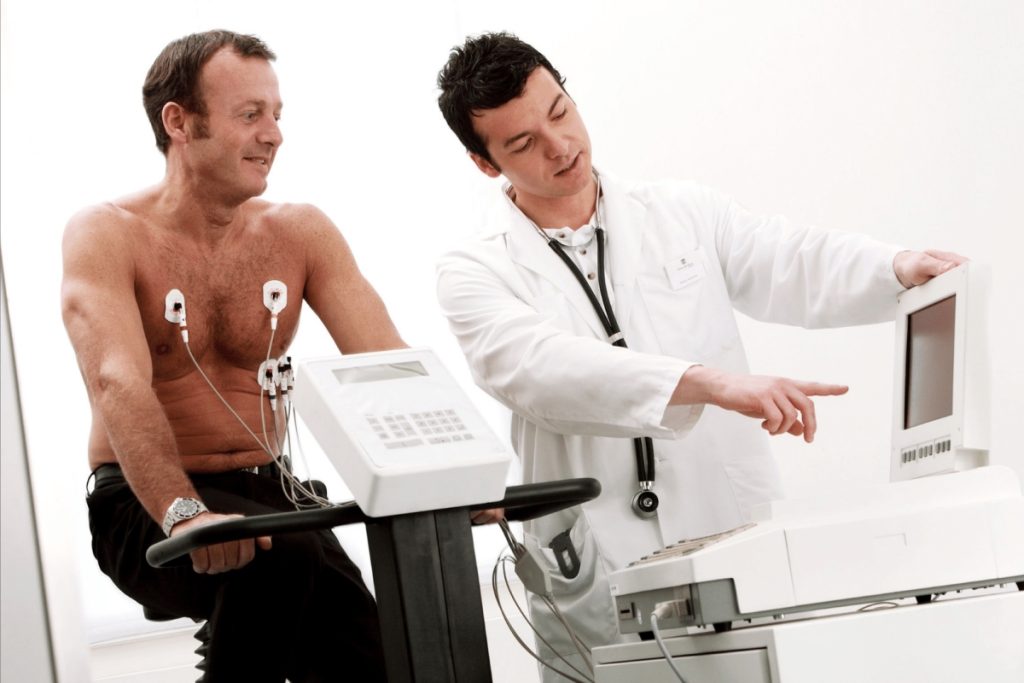
Metabolic Adaptation and Starvation Survival Response


Metabolic Adaptation and Starvation Survival Response
What is metabolic adaptation?
Your body is wired for survival. It naturally wants you to hold onto some fuel just in case you can’t find food. Metabolic adaptation is when your metabolism adjusts to burning calories based on calorie intake and storage. Also, if you’ve lost and regained weight, metabolic adaptation means you may burn fewer calories overall than if you had never lost the weight at all. Mainly, it’s meant to help prevent you from dying of starvation.

Negative Metabolic Adaptation
When negative metabolic adaptation occurs, your overall metabolism decreases in all categories, including:
- Resting metabolic rate, or the calories you burn to keep your body warm, produce hormones, sleep and breathe, grow and repair, etc.
- Exercise and non-exercise activity thermogenesis, so you may feel weaker than before and less fidgety.
- Calories to eat and digest food, partly because you eat less.
When your metabolism goes down, your caloric deficit becomes smaller making it harder to lose weight.
In a study of 65 overweight women, ages 20 to 41, participants maintained an 800-calorie diet until reaching a BMI of 25 or less. Metabolic adaptation occurred for participants after an average of 16% weight loss. For every increase of 10 calories of metabolic adaptation (or decrease in a caloric deficit), the time to reach their weight loss goal increased by one day.
A reduction in caloric needs during weight loss makes logical sense. A smaller body with less weight doesn’t need as many calories to move around. However, true metabolic adaptation occurs outside of what can be explained by this reduction in mass.
Positive Metabolic Adaptation
Conversely, your metabolism can also adapt to burn more calories when you eat more. This is called positive metabolic adaptation. This is why most people can eat 50 – 200 calories more per day without gaining weight. It’s also why bulking bodybuilders feel stronger and fidget more on a caloric surplus. Also, these bodybuilders need to gorge themselves substantially more the longer they’re gaining weight. Taking breaks or cycling in small caloric deficits can mitigate some of these positive metabolic adaptations.
Therefore, metabolic adaptation is not just the difference in your caloric needs as you diet. Instead, it’s the difference between your metabolism vs. someone of the same size and body composition.
What is the starvation survival response?

The starvation survival response is the more extreme end of metabolic adaptation. It happens when your body feels that its survival is threatened. Aside from dialing down your metabolism, it also increases your hunger, cravings, and food obsession. It’s very common among physique competitors.
As early humans, we had to survive periods of days and possibly weeks without food. Hunting and gathering for food were never guaranteed, especially in the winter when fruits and vegetables were unavailable.
Your body is intelligent. It has some self-defense mechanisms in place to increase your survival probability. That means it can activate the starvation survival response when:
- Your body fat gets too low. So, your body slows down your metabolism to increase your chance of survival. For men, essential body fat is 3%, and for women, it’s 13%. Any lower and your body will begin to shut down.
- You lose weight too fast.
- Your body is experiencing great deals of stress, which could include hard training, while you’re not consuming enough calories.
- You fast or put your body in a similar state as fasting, such as on a ketogenic diet, for too long.
What it takes for each person to activate their own starvation survival response varies from person to person. Women may hit it more readily than men. Previous episodes of having been in starvation survival mode can also make it easier for you to activate it again.
When Matt was getting ready for his wedding, he wanted to lose an additional 15 lbs to look his best. He had already lost over 30 lbs in the 2 years prior. Matt PUSHED HARD. He was doing sprints up hills in the jungle of Panama and cut his calories aggressively.
Matt did lose the final 15 lbs, but then THE HUNGER came. The Hunger is when your body chronically elevates ghrelin (the hunger hormone) as a self-defense mechanism in order to encourage you to eat more and regain some body fat. Your body doesn’t care about looking good on Instagram, it cares about survival.
Matt felt hungry for 2 years after that and regained most of the lost weight. The Hunger only subsided after the weight rebounded back to its old level.
Even though we no longer live like hunter-gatherers and we now have food in abundance, our bodies haven’t caught up to that idea. If you’ve been training hard and on aggressive diet deficits with no break, your survival response will kick in and undermine your long-term weight loss goals.
How long do metabolic adaptation and starvation response last?
When metabolic adaptations occur due to weight loss, it’s unclear how long it lasts. Some scientists believe that metabolic adaptations will continue as long as there is a negative energy balance (fewer calories in than out) but will slowly normalize over time after the energy balance stabilizes at a lower weight.
Many studies show that metabolic adaptation is still present at the same rate as at the time of major weight loss at least one year out.
A study compared participants in groups of three of the same sex and weight. Each group consisted of the following:
- One participant at their usual weight
- One at 10% or more reduction in weight 5-8 weeks after weight loss
- One participant at more than 10% reduction in weight sustained for more than one year.
The RMR of the participants at their usual weight was significantly higher than those who sustained their weight loss over a year after initial weight loss. This means that the metabolism drop that occurs from weight loss persists well after reaching your goal.
Only one study has looked as far as six years after weight loss.
A study of 14 “The Biggest Loser” competitors examined the long-term effects of extreme weight loss on metabolic adaptation and body composition. After six years, even with weight regain, participants’ resting metabolic rate (RMR) remained as low as it had been after the initial weight loss.
Regardless of how long metabolic adaptation lasts, it clearly happens and is a barrier to maintaining weight loss. In fact, it makes it easier to gain weight over time.
Health downsides of metabolic adaptation and starvation response
When you’ve reached a state of metabolic adaptation or starvation response, many changes occur in your body.
Leptin levels drop
Leptin, a hormone stored in your fat cells, helps maintain your energy balance, thereby regulating your body weight. It does this by telling you when you feel full. As you lose weight and store fat, your leptin levels decrease.
When fasting, leptin declines by 50 percent on the first day. Because you don’t start losing fat on the first day, this drop must be due to something else. In fact, it’s an early adaptation to starvation. Scientists believe it is due to a rapid increase in cortisol that occurs at the same time.
This increase in cortisol likely occurs quickly after fasting begins to protect the brain from the effects of starvation. A meta-analysis of 13 studies examining the cortisol levels of fasting individuals showed that cortisol levels returned to normal after several weeks.
When your leptin levels are low, you feel hungrier. Your brain also receives the signal to reduce the number of calories you burn, which also reduces thyroid and sex hormones.
Thyroid hormones

Your thyroid hormones are the regulators of your metabolism. Once your leptin levels drop, it signals your brain to decrease your thyroid hormone levels and their activation. Your thyroid hormones like TSH and T4 may be normal, but the activated form (T3) goes down. As a result, your lab tests may appear completely normal, but you feel colder and more sluggish.
While not its main function, thyroid hormone also plays a role in activating mitochondrial uncoupling. A higher rate of uncoupling causes you to burn more calories. With less thyroid hormone available, mitochondrial uncoupling that’s so helpful for weight loss diminishes.
Sex hormones
When leptin levels drop, so do your sex hormones. In males, this means a drop in testosterone, and in females, estrogen and testosterone. Not only does testosterone play a role in increasing protein synthesis and muscle mass, but scientists also believe it can repress the development of fat cells.
In a controlled study of 50 women preparing for a fitness competition, participants reduced carbohydrate intake and increased protein intake, exercise, and resistance training. Researchers tracked participants’ hormone levels. Along with leptin and thyroid hormones, testosterone and estrogen dropped drastically. The women also experienced an increase in menstrual irregularities.
In a study of men preparing for a fitness competition, 7 participants were energy-restricted while another 7 served as a control group. After 11 weeks of energy restriction, both insulin and testosterone levels dropped.
For both men and women, low levels of testosterone and estrogen, respectively, can cause reproductive issues. As shown in the above study, it can cause irregular menstruation in women. Low testosterone levels, while they don’t directly cause infertility, can cause lower sperm counts in men and, therefore, affect reproduction.
Skin and hair
Other unfortunate effects of a slowing metabolism include:
- Hair loss or thinning
- Dry, scaly, rough skin
- Brittle nails
Both leptin and thyroid hormones affect hair growth. Leptin controls your hair follicle cycle from growth to loss and then regrowth. When leptin levels are low, the hair cycle is halted. Not surprisingly, with the known connection between leptin and thyroid hormone, long-term periods of low thyroid hormone levels also cause hair loss.
Having low thyroid function can also reduce your sweat secretion. You have sweat glands all over your body. When sweat dramatically decreases, it can lead to dry skin.
Taking a look at your nails is a great way to get a clue about the current state of your health. With a slow metabolism, your nails often become brittle and break easily.
Now that we’ve covered what happens to your body when you’re in a state of metabolic adaptation or starvation response, you’re probably hoping there is a way to lose weight and avoid the adverse effects. In the next section, we’ll discuss some strategies you can take.
Chronic health problems
Activating the starvation survival mode can lead to chronic health problems because it’s extremely stressful for your body. It’s not uncommon for physique competitors to develop gut, skin, and hormonal issues after prolonged intense show preps. Some of them even develop autoimmune diseases or more severe conditions.
How to achieve nutrition goals with minimal metabolic adaptation and starvation survival response
While metabolic adaptation during weight loss might feel inevitable, it doesn’t have to be. Here are some steps you can take on your weight loss journey.
Don’t go too aggressively on your caloric deficit.

Because metabolic adaptations are likely more extreme the larger the caloric deficit, it’s best to stick to the smallest deficit you can that allows you to still lose weight. The most commonly known dietary rule is to reduce caloric consumption by 3500 calories per week to lose 1 pound per week. Research shows us, however, that it’s not quite that simple.
Before determining how many calories you should reduce your intake by, you need to know your resting metabolic rate (RMR). One way to determine this is by using a formula, the most accurate of which is the Mifflin-St Jeor.
- For men: RMR = 9.99 x weight + 6.25 x height – 4.92 x age +5
- For women: RMR = 9.99 x weight + 6.25 x height – 4.92 x age – 161
Even though this is the most accurate formula, it still doesn’t consider factors such as your muscle mass and activity level. The most precise way to determine your RMR is through an RMR breathing test with a health practitioner.
Once you know your RMR, you can ensure that your caloric deficit isn’t too extreme. Think no more than 500-1,000 calories per day through caloric restriction or exercise.
Avoid hyper-activating your stress response
Caloric restriction and resistance training activates your metabolic stress response. When done healthily, this is how you gain muscles and can even be anti-aging. If you push yourself too far, however, you can hyperactivate your stress response leading to an even lower RMR.
All physical stress increases your energy expenditure, including illness, injury, and psychological stress. This is okay on a short-term basis, but when you experience chronic stress, your body feels threatened, and it will preserve your energy stores accordingly by further slowing down your metabolism.
Beyond avoiding an extreme caloric deficit, you can prevent hyper-activating your stress response by allowing yourself time to rest and recover between physically demanding workouts. This doesn’t mean sitting on the couch and watching TV; you can still engage in low-intensity activities such as biking, walking, or yoga.
Cycle in diet breaks and “refeeds”
Rather than constantly maintaining caloric restriction, build in some rest periods when you eat more calories. This tells your body you’re not in a famine.
In a 42-week study of 51 obese men, subjects either followed a continuous calorie-restricted diet or an intermittently restricted one. Both groups ate a diet with a caloric restriction of 33% RMR adjusted every four weeks. The intermittently restricted group ate a calorie-restricted diet for eight weeks, followed by two weeks of energy balance (calories in = calories out).
Participants in the intermittent group had a higher fat loss and weight loss. Those in the intermittent group also maintained a higher RMR than those on the continuously restricted diet.
Therefore, not only can allowing your body breaks and refeeds from caloric restriction lead to additional weight loss, but it can also help prevent metabolic adaptation.
Conversely, if you’re working on bulking or muscle gain, cycling in maintenance, fasting, or caloric deficit days will mitigate the positive metabolic adaptations. So, in the long run, you’ll need less calories to gain the same amount of weight.
Get enough sleep
Don’t undermine your weight loss efforts by not getting enough shut-eye. Getting adequate sleep is critical to regulating your metabolism.
In a study of 10 adults under 14 days of calorie restriction, participants got 8.5 or 5.5 hours of sleep each night. The group with less sleep experienced a reduction in fat loss by 55% and an increase in tissue loss of 60% compared to the participants who got more sleep.Therefore, not getting enough sleep may cause muscle loss and take you one step closer to metabolic adaptation.
Get tips on how to maximize your sleep quality from this blog post.
How to counteract metabolic adaptations
What if it’s too late for prevention, and you’ve already reached the point of metabolic adaptation? Here are some strategies to help you rebuild your metabolism.
Build muscle and increase protein

Focus on maintaining your lean body mass as you move through the weight loss process. High muscle mass increases your RMR.
In a study of 61 healthy adults, researchers measured the fat-free mass of the participants and their RMR while undertaking nine months of full-body resistance training. Participants also took either whey protein, soy protein, or carbohydrate supplements while training.
Across all groups, resistance training increased the RMR of participants on average by about 5%. The increase in RMR with whey protein was double that of those taking the carbohydrates. Therefore, building muscles and supplementing with protein can increase your RMR.
Check out some tips on how to increase your protein intake here.
Cold exposure
You have a particular type of fat in your body called brown fat. When brown fat is activated by cold, it breaks down blood sugar and fat molecules to keep you warm. This is also known as mitochondrial uncoupling. It allows your body to burn more calories.
A meta-analysis of 10 trials examined the effects of cold exposure between 16-19℃ (60.8 – 66.2℉) on brown fat and metabolism compared to room temperature. Cold exposure increases brown fat activity and metabolism. Cold can even turn your white fat into beneficial brown fat.
For an easy way to get daily cold exposure and speed up your metabolism, turn your knob down in the shower for a cold, refreshing boost.
Supplements that increase mitochondrial uncoupling
Just like cold exposure can speed up mitochondrial uncoupling, we’ve got some fantastic supplements to increase it daily. Both kApex and Berberine Breakthrough have got you covered with the following ingredients:
- Bitter melon increases uncoupling protein expression.
- Berberine decreases the level of energy production in the cells, thereby increasing mitochondrial uncoupling.
- CoQ10 is a necessary factor for mitochondrial uncoupling to take place.
- Innoslim activates AMPK, the central regulator for energy balance, which stimulates mitochondrial uncoupling.
The Takeaway
Metabolic adaptation can be a very frustrating part of your weight loss journey. Wherever you may be on your journey, plan now to prevent you from struggling with metabolic adaptation in the future.
- Don’t engage in too aggressive dieting and training programs
- Put plans like reverse dieting in place now to help maintain results after achieving your fat loss goals.
- Turn the knob down in the shower to gain the benefits of cold showers to speed up your metabolism.
- Take supplements like kApex and Berberine Breakthrough to increase mitochondrial uncoupling.
- Manage your stress for overall health and the benefit of weight loss.
- See a functional medicine doctor to monitor your hormones and overall wellness markers regularly as you make changes in your diet and training. If you’ve hit the Starvation Survival Mode, they can also support your body to recover from that, too.
References
- Martins C, Gower BA, Hunter GR. Metabolic adaptation delays time to reach weight loss goals. Obesity (Silver Spring). 2022;30(2):400-406. doi:10.1002/oby.23333
- Müller MJ, Bosy-Westphal A. Adaptive thermogenesis with weight loss in humans. Obesity (Silver Spring). 2013;21(2):218-228. doi:10.1002/oby.20027
- Body composition information and FAQ’s sheet. Upenn.edu. Accessed December 3, 2022. http://pennshape.upenn.edu/files/pennshape/Body-Composition-Fact-Sheet.pdf
- Rosenbaum M, Hirsch J, Gallagher DA, Leibel RL. Long-term persistence of adaptive thermogenesis in subjects who have maintained a reduced body weight. Am J Clin Nutr. 2008;88(4):906-912. doi:10.1093/ajcn/88.4.906
- Tam CS, Redman LM, Greenway F, LeBlanc KA, Haussmann MG, Ravussin E. Energy metabolic adaptation and cardiometabolic improvements one year after gastric bypass, sleeve gastrectomy, and gastric band. J Clin Endocrinol Metab. 2016;101(10):3755-3764. doi:10.1210/jc.2016-1814
- Fothergill E, Guo J, Howard L, et al. Persistent metabolic adaptation 6 years after “The Biggest Loser” competition: Persistent Metabolic Adaptation. Obesity (Silver Spring). 2016;24(8):1612-1619. doi:10.1002/oby.21538
- Friedman JM, Halaas JL. Leptin and the regulation of body weight in mammals. Nature. 1998;395(6704):763-770. doi:10.1038/27376
- Steinhauser ML, Olenchock BA, O’Keefe J, et al. The circulating metabolome of human starvation. JCI Insight. 2018;3(16). doi:10.1172/jci.insight.121434
- Nakamura Y, Walker BR, Ikuta T. Systematic review and meta-analysis reveals acutely elevated plasma cortisol following fasting but not less severe calorie restriction. Stress. 2016;19(2):151-157. doi:10.3109/10253890.2015.1121984
- Mullur R, Liu YY, Brent GA. Thyroid hormone regulation of metabolism. Physiol Rev. 2014;94(2):355-382. doi:10.1152/physrev.00030.2013
- Harper ME, Seifert EL. Thyroid hormone effects on mitochondrial energetics. Thyroid. 2008;18(2):145-156. doi:10.1089/thy.2007.0250
- Hulmi JJ, Isola V, Suonpää M, et al. The effects of intensive weight reduction on body composition and serum hormones in female fitness competitors. Front Physiol. 2016;7:689. doi:10.3389/fphys.2016.00689
- Di Guardo F, Vloeberghs V, Bardhi E, et al. Low testosterone and semen parameters in male partners of infertile couples undergoing IVF with a total sperm count greater than 5 million. J Clin Med. 2020;9(12):3824. doi:10.3390/jcm9123824
- Watabe R, Yamaguchi T, Kabashima-Kubo R, Yoshioka M, Nishio D, Nakamura M. Leptin controls hair follicle cycling. Exp Dermatol. 2014;23(4):228-229. doi:10.1111/exd.12335
- Contreras-Jurado C, Lorz C, García-Serrano L, Paramio JM, Aranda A. Thyroid hormone signaling controls hair follicle stem cell function. Mol Biol Cell. 2015;26(7):1263-1272. doi:10.1091/mbc.E14-07-1251
- Safer JD. Thyroid hormone action on skin. Dermatoendocrinol. 2011;3(3):211-215. doi:10.4161/derm.3.3.17027
- The lowdown on thyroid slowdown. Harvard Health. Published August 17, 2021. Accessed December 3, 2022. https://www.health.harvard.edu/newsletter_article/the-lowdown-on-thyroid-slowdown
- Thomas DM, Martin CK, Lettieri S, et al. Can a weight loss of one pound a week be achieved with a 3500-kcal deficit? Commentary on a commonly accepted rule. Int J Obes (Lond). 2013;37(12):1611-1613. doi:10.1038/ijo.2013.51
- Frankenfield D, Roth-Yousey L, Compher C. Comparison of predictive equations for resting metabolic rate in healthy nonobese and obese adults: a systematic review. J Am Diet Assoc. 2005;105(5):775-789. doi:10.1016/j.jada.2005.02.005
- de Freitas MC, Gerosa-Neto J, Zanchi NE, Lira FS, Rossi FE. Role of metabolic stress for enhancing muscle adaptations: Practical applications. World J Methodol. 2017;7(2):46-54. doi:10.5662/wjm.v7.i2.46
- Romero NR, Agostinis P. Molecular mechanisms underlying the activation of autophagy pathways by reactive oxygen species and their relevance in cancer progression and therapy. In: Autophagy: Cancer, Other Pathologies, Inflammation, Immunity, Infection, and Aging. Elsevier; 2014:159-178.
- Rabasa C, Dickson SL. Impact of stress on metabolism and energy balance. Curr Opin Behav Sci. 2016;9:71-77. doi:10.1016/j.cobeha.2016.01.011
- Kuti D, Winkler Z, Horváth K, et al. The metabolic stress response: Adaptation to acute-, repeated- and chronic challenges in mice. iScience. 2022;25(8):104693. doi:10.1016/j.isci.2022.104693
- Byrne NM, Sainsbury A, King NA, Hills AP, Wood RE. Intermittent energy restriction improves weight loss efficiency in obese men: the MATADOR study. Int J Obes (Lond). 2018;42(2):129-138. doi:10.1038/ijo.2017.206
- Nedeltcheva AV, Kilkus JM, Imperial J, Schoeller DA, Penev PD. Insufficient sleep undermines dietary efforts to reduce adiposity. Ann Intern Med. 2010;153(7):435-441. doi:10.7326/0003-4819-153-7-201010050-00006
- Aristizabal JC, Freidenreich DJ, Volk BM, et al. Effect of resistance training on resting metabolic rate and its estimation by a dual-energy X-ray absorptiometry metabolic map. Eur J Clin Nutr. 2015;69(7):831-836. doi:10.1038/ejcn.2014.216
- Huo C, Song Z, Yin J, et al. Effect of acute cold exposure on energy metabolism and activity of brown adipose tissue in humans: A systematic review and meta-analysis. Front Physiol. 2022;13:917084. doi:10.3389/fphys.2022.917084
- Chan LLY, Chen Q, Go AGG, Lam EKY, Li ETS. Reduced adiposity in bitter melon (Momordica charantia)–fed rats is associated with increased lipid oxidative enzyme activities and uncoupling protein expression. J Nutr. 2005;135(11):2517-2523. doi:10.1093/jn/135.11.2517
- Ferdous MRU, Abdalla M, Yang M, Xiaoling L, Song Y. Berberine chloride (dual topoisomerase I and II inhibitor) modulate mitochondrial uncoupling protein (UCP1) in molecular docking and dynamic with in-vitro cytotoxic and mitochondrial ATP production. J Biomol Struct Dyn. Published online 2022:1-11. doi:10.1080/07391102.2021.2024255
- Echtay KS, Winkler E, Klingenberg M. Coenzyme Q is an obligatory cofactor for uncoupling protein function. Nature. 2000;408(6812):609-613. doi:10.1038/35046114
- Putman CT, Kiricsi M, Pearcey J, et al. AMPK activation increases uncoupling protein-3 expression and mitochondrial enzyme activities in rat muscle without fibre type transitions. J Physiol. 2003;551(Pt 1):169-178. doi:10.1113/jphysiol.2003.040691






